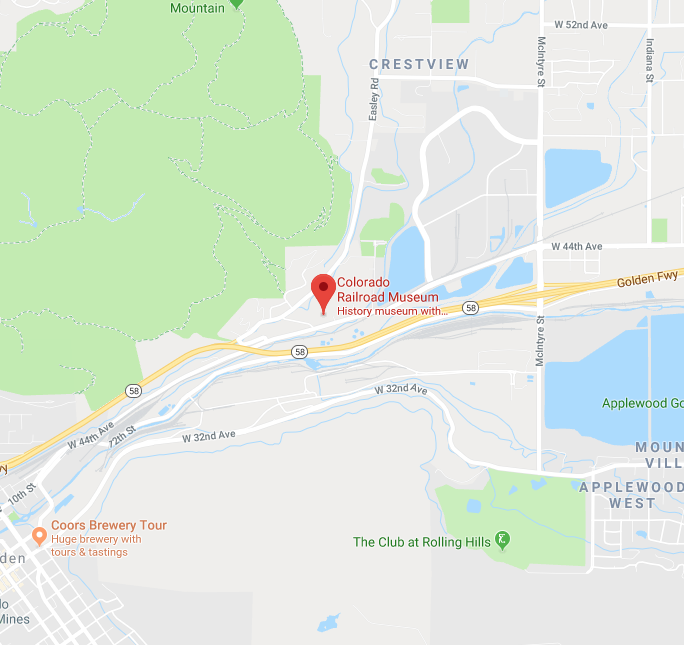
2025/2026 Excursions to Celebrate State’s 150th & USA’s 250th Anniversaries
GOLDEN, CO – JULY 3, 2025….With 18 operating steam locomotives and five undergoing major refurbishment, Colorado is today the nation’s undisputed capital of narrow gauge steam railroading. With all of this opportunity, however, nothing is more exciting to rail enthusiasts than the thrill of riding a train pulled by a unique locomotive through different terrain. And now, the Colorado Railroad Museum (CRRM) has partnered with the Durango Railroad Historical Society (DRHS) and the Durango & Silverton Narrow Gauge Railroad (D&SNRR) to collectively make two locomotive loans possible over the next year.
CRRM’s beloved Rio Grande Southern steam locomotive No. 20 (Schenectady, 1899) will travel from Golden to Durango this fall, where it will run special winter excursions over the D&SNGRR select days in January-February 2026. In its last years in-service, No. 20 starred in the 1950 feature film A Ticket to Tomahawk, with scenes filmed along the scenic Animas River route that is today followed by Durango & Silverton excursions, so these excursions will reunite the locomotive with familiar territory. The return of RGS No. 20 to Durango is a monumental achievement for crews and personnel of both railroads, truly bringing the history of the Rio Grande Southern to life.
Separately, Denver & Rio Grande Western locomotive No. 315 will travel in fall 2025 to the Colorado Railroad Museum in Golden, where it will help power THE POLAR EXPRESS™ Train Ride during November 2025. The 1895-vintage locomotive will remain at the Museum through at least May 2026, participating in a “Florence & Cripple Creek Reunion”-themed Colorado Crossings event that month. For that event, No. 315 will be featured alongside RGS No. 20 (back by then from Durango), since both locomotives share a Florence & Cripple Creek heritage. DRHS and CRRM leadership are excited to bring this well-known locomotive to Golden; in recent years it pulled a variety of special excursions over the Cumbres & Toltec Scenic Railroad, co-owned by the states of Colorado and New Mexico.
“With the economic ups and downs of 19th and 20th century railroading, it was common for one locomotive over time to work for different railroads,” notes Paul Hammond, executive director of the Colorado Railroad Museum. “Today, with Colorado’s unparalleled scenic and tourist and museum railroads partnering together for the future, it makes sense to travel some of the most iconic locomotives around the state from time to time. For the Colorado Railroad Museum, the benefit is exposing new audiences to the history and magic of riding trains pulled by these amazing, transformative, and historic machines.”
Tickets are now on sale, via the D&SNGRR website for the trips behind No. 20.
Beyond Locomotives
Hammond notes that railroads have been crucial to the state’s development, transforming Colorado from an isolated, remote territory in the late 1850s to becoming the 38th state in the Union in 1876. As Colorado approaches its 150th anniversary in 2026, alongside the nationwide America 250th anniversary, the Colorado Railroad Museum will be offering programs and activities commemorating the important roles that railroads played in Colorado and the West.
Upcoming exhibits will examine “Traqueros,” Mexican American railroad track workers in the Southwest, opening in October 2025. Also, the Museum is sponsoring a 2026 television documentary that will look at the contributions American women have made to railroading. The Museum, which broke attendance records in both 2023 and 2024, is dedicated not only to preserving historic railroading in Colorado (with more than 100 preserved locomotives and historic rail vehicles, plus large and significant archival and smaller 3D- artifact collections), but also in telling the stories of the impacts that railroads had on a diverse array of people all across the state.
“It was never easy to build a railroad in Colorado,” Hammond notes. The mountainous terrain, deep river gorges, severe winter snowfalls, droughts, floods, and elevation gains all made building railroads here a difficult—and treacherous—occupation. “Colorado would not exist as the state it is today without railroads, and as we approach Colorado’s 150th anniversary it is rewarding to know that no state has done a better job of preserving narrow gauge railroad history, offering kids and families today an authentic opportunity to experience what steam railroading was like 150 years ago.”
FOR MORE INFORMATION:
The Colorado Railroad Museum, located in the beautiful Clear Creek Valley in Golden, is open Tuesday-Sunday year-round. Visit www.ColoradoRailroadMuseum.org for more information. The Durango & Silverton Narrow Gauge Railroad has been in continuous operation between Durango and Silverton since 1882, carrying passengers behind historic steam and diesel locomotives and rolling stock indigenous to the line. Visit www.DurangoTrain.com for more information. The Durango Railroad Historical Society is focused on bringing the importance of narrow gauge railroading to life through exhibits, displays, and operation of locomotive No. 315. Visit www.drhs315.org for more information.



